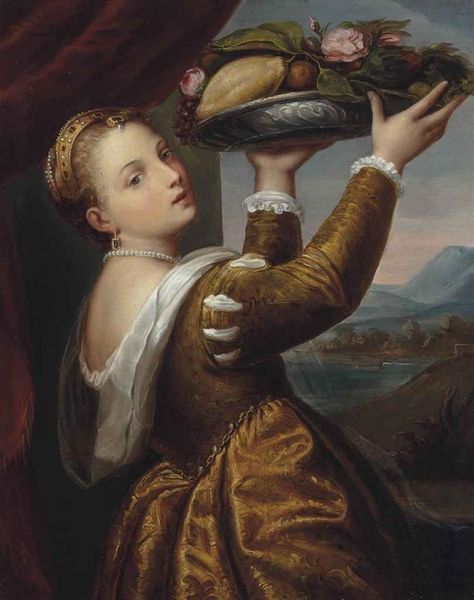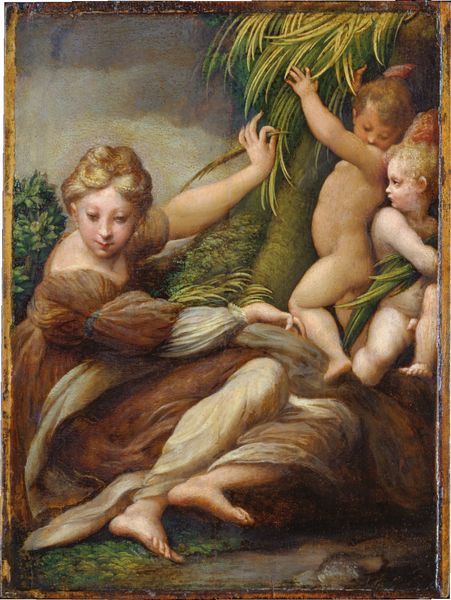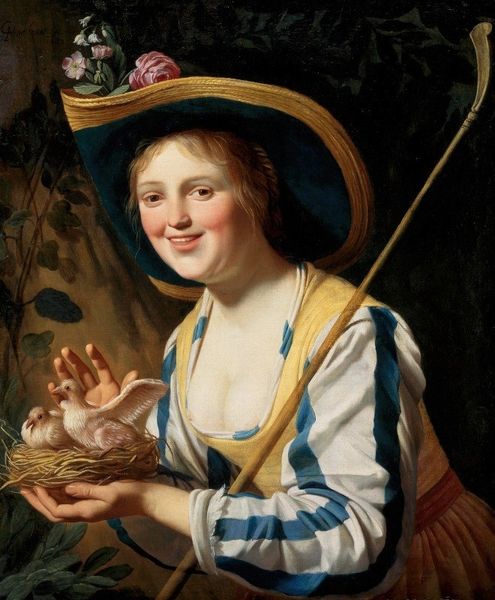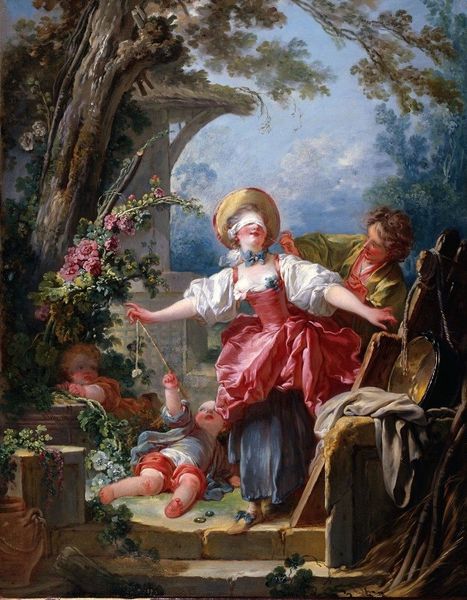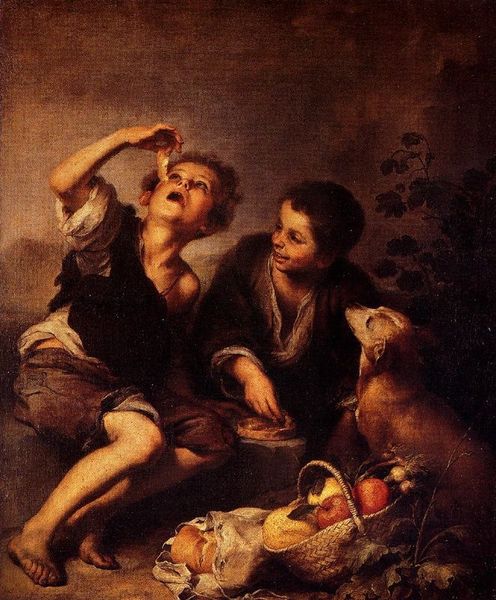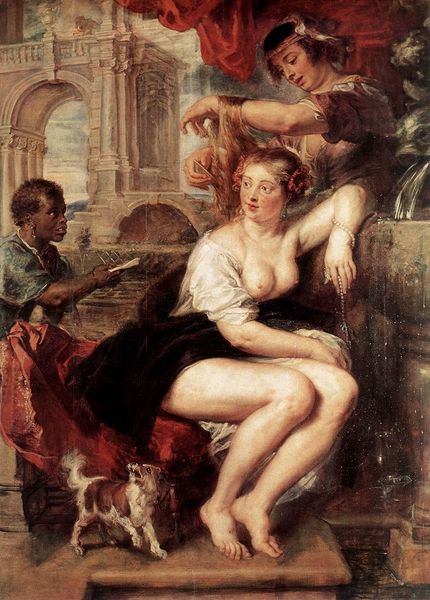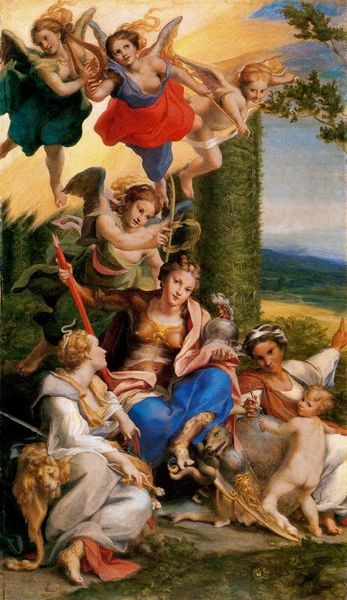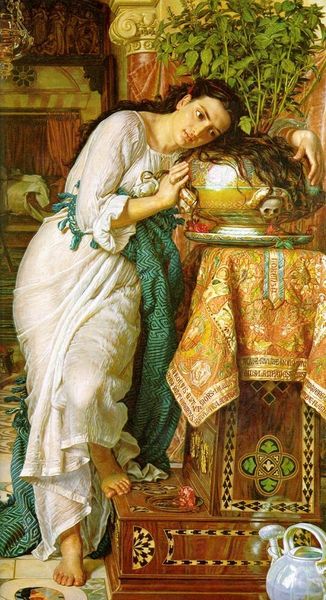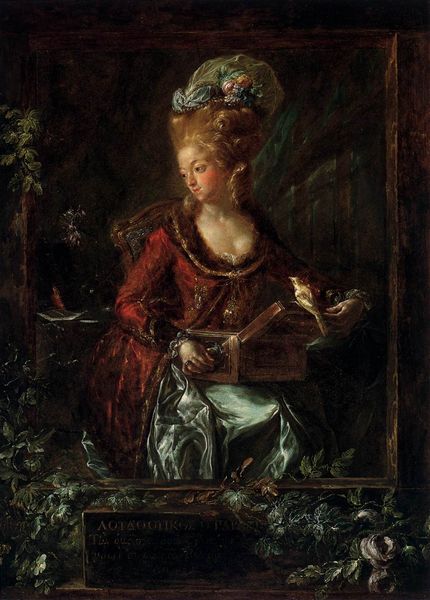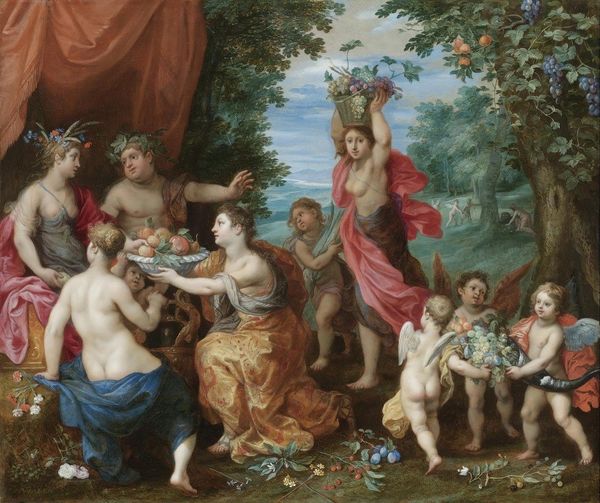
painting, oil-paint
#
portrait
#
allegory
#
baroque
#
painting
#
oil-paint
#
oil painting
#
roman-mythology
#
mythology
#
history-painting
Dimensions: 87 x 70 cm
Copyright: Public domain
Editor: Here we have Guido Reni’s "The Boy Bacchus," created around 1620, an oil painting currently housed at the Palazzo Pitti. I’m struck by the almost unsettling innocence of Bacchus as a child here. What stories does this artwork tell you? Curator: For me, this work exists as part of a longer exploration of gender, power, and societal expectation. Consider how mythological figures, especially those embodying revelry and freedom like Bacchus, were traditionally depicted. How does Reni's choice to portray him as a soft, almost androgynous child challenge those expectations? The grapes and the wine allude to abundance, but a constrained, almost performative abundance under the gaze of a ruling elite. Does the child *choose* the life of the god? Or is it an inheritance? Editor: So, you're suggesting this isn't just a cute mythological scene; it's a commentary on predetermined roles? I hadn’t considered that. The grapes almost feel like a gilded cage now. Curator: Exactly! And who benefits from this abundance? Consider the patrons who commissioned such works, often displaying their wealth and power through allegorical references. Where does the "freedom" of Bacchus intersect with the very real constraints on artistic and personal expression within 17th century Italy, for those who weren’t wealthy? Editor: That completely reframes the piece for me. It is so different when viewed in context! I see now how what seems at first viewing is simply pretty is infused with the very real tensions between freedom and constraint, expectation and rebellion. Thank you! Curator: Precisely! Art rarely exists in a vacuum. Recognizing the voices and social structure behind the artworks encourages us to engage far more critically with visual culture.
Comments
No comments
Be the first to comment and join the conversation on the ultimate creative platform.
